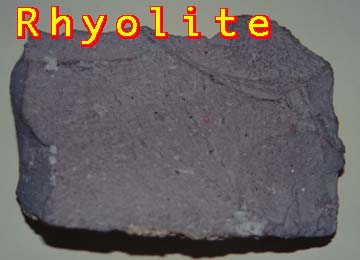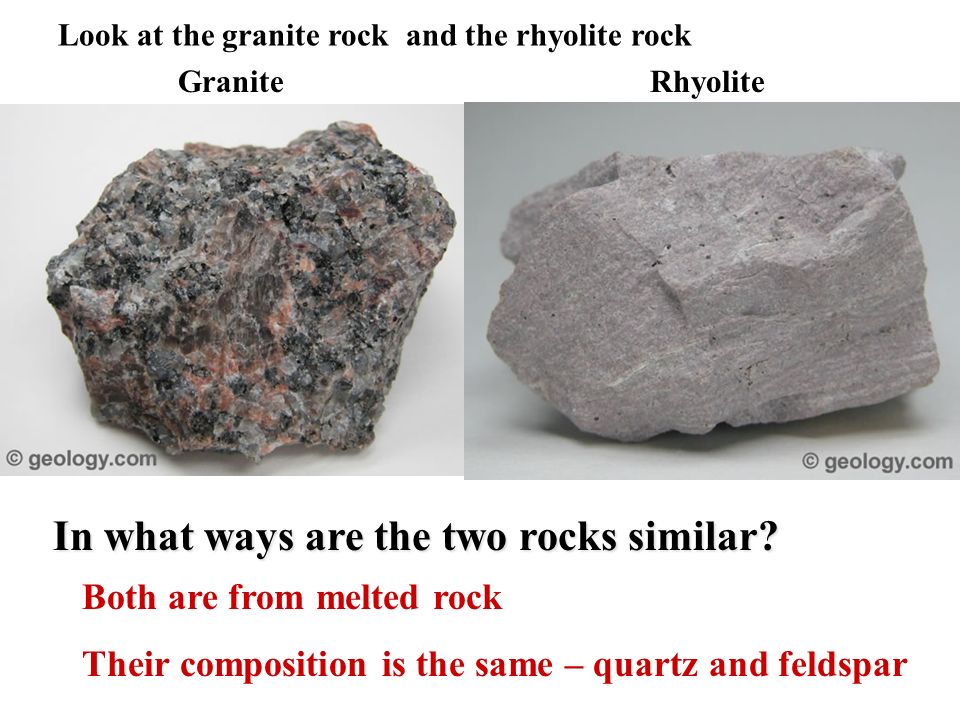They have very similar compositions but one is erupted onto earth s surface and the other crystallises at.
Rhyolite and granite are alike in that they both are.
In such cases the rock may consist principally of well developed large single crystals phenocrysts at the time of extrusion.
Both granite and rhyolite are felsic igneous rocks formed from very viscous silica rich magma.
Granite is plutonic and rhyolite is volcanic.
The difference is that granite sits on the plutonic diagram and rhyolite sits on the volcanic diagram.
The difference between them is that granite cools slowly.
Rhyolite is a silica rich igneous rock found throughout the world.
Both are felsic igneous rocks meaning they form from molten rock that is rich in silica sodium potassium and aluminum.
Rhyolite is similar in composition and appearance to granite but it forms through a.
Larger crystal size in one of two igneous rocks of similar composition usually indicates that the rock with the larger crystals cooled for.
So they have a similar composition but one is volcanic and the other is plutonic.
Granite and rhyolite have essentially the same composition.
Crystallization may sometimes have begun while the magma was deeply buried.
They have essentially the same composition.
A longer period of time than the other.




























